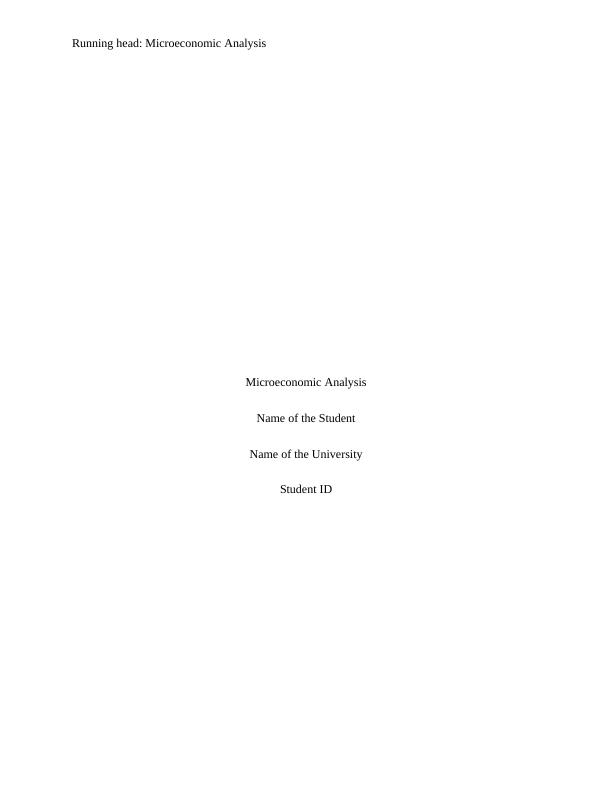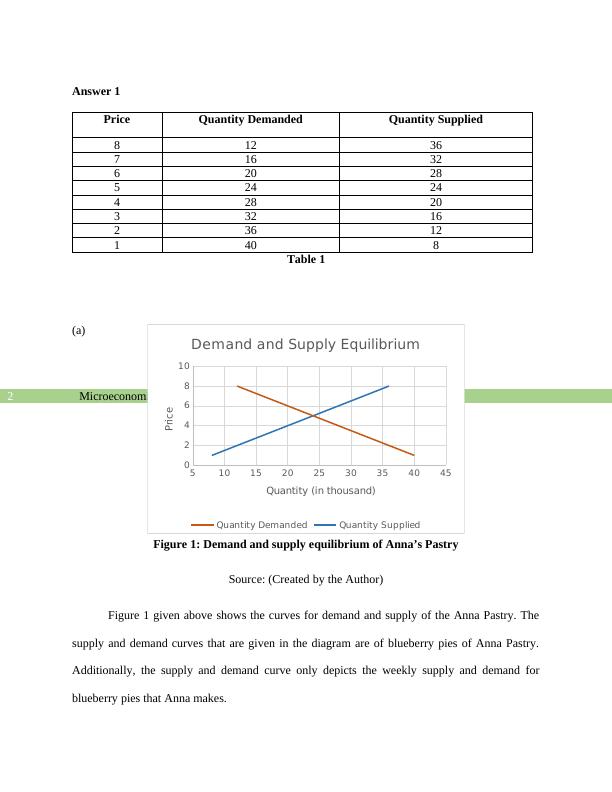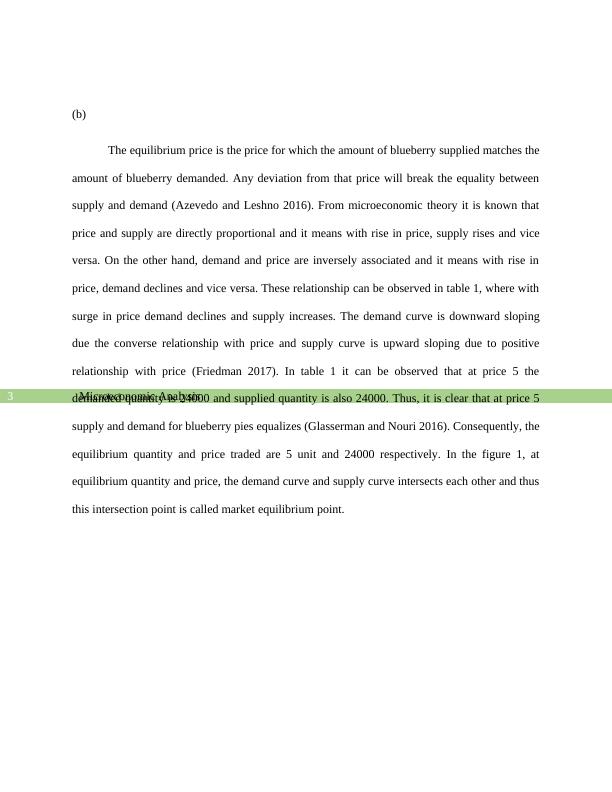Microeconomic Analysis
Added on 2022-11-24
13 Pages2861 Words172 Views
Running head: Microeconomic Analysis
Microeconomic Analysis
Name of the Student
Name of the University
Student ID
Microeconomic Analysis
Name of the Student
Name of the University
Student ID

Microeconomic Analysis1
Table of Contents
Answer 1..........................................................................................................................................2
Answer 2..........................................................................................................................................6
Answer 3..........................................................................................................................................7
Answer 4..........................................................................................................................................9
References......................................................................................................................................11
Table of Contents
Answer 1..........................................................................................................................................2
Answer 2..........................................................................................................................................6
Answer 3..........................................................................................................................................7
Answer 4..........................................................................................................................................9
References......................................................................................................................................11

Microeconomic Analysis2
Answer 1
Price Quantity Demanded Quantity Supplied
8 12 36
7 16 32
6 20 28
5 24 24
4 28 20
3 32 16
2 36 12
1 40 8
Table 1
(a)
Figure 1: Demand and supply equilibrium of Anna’s Pastry
Source: (Created by the Author)
Figure 1 given above shows the curves for demand and supply of the Anna Pastry. The
supply and demand curves that are given in the diagram are of blueberry pies of Anna Pastry.
Additionally, the supply and demand curve only depicts the weekly supply and demand for
blueberry pies that Anna makes.
5 10 15 20 25 30 35 40 45
0
2
4
6
8
10
Demand and Supply Equilibrium
Quantity Demanded Quantity Supplied
Quantity (in thousand)
Price
Answer 1
Price Quantity Demanded Quantity Supplied
8 12 36
7 16 32
6 20 28
5 24 24
4 28 20
3 32 16
2 36 12
1 40 8
Table 1
(a)
Figure 1: Demand and supply equilibrium of Anna’s Pastry
Source: (Created by the Author)
Figure 1 given above shows the curves for demand and supply of the Anna Pastry. The
supply and demand curves that are given in the diagram are of blueberry pies of Anna Pastry.
Additionally, the supply and demand curve only depicts the weekly supply and demand for
blueberry pies that Anna makes.
5 10 15 20 25 30 35 40 45
0
2
4
6
8
10
Demand and Supply Equilibrium
Quantity Demanded Quantity Supplied
Quantity (in thousand)
Price

Microeconomic Analysis3
(b)
The equilibrium price is the price for which the amount of blueberry supplied matches the
amount of blueberry demanded. Any deviation from that price will break the equality between
supply and demand (Azevedo and Leshno 2016). From microeconomic theory it is known that
price and supply are directly proportional and it means with rise in price, supply rises and vice
versa. On the other hand, demand and price are inversely associated and it means with rise in
price, demand declines and vice versa. These relationship can be observed in table 1, where with
surge in price demand declines and supply increases. The demand curve is downward sloping
due the converse relationship with price and supply curve is upward sloping due to positive
relationship with price (Friedman 2017). In table 1 it can be observed that at price 5 the
demanded quantity is 24000 and supplied quantity is also 24000. Thus, it is clear that at price 5
supply and demand for blueberry pies equalizes (Glasserman and Nouri 2016). Consequently, the
equilibrium quantity and price traded are 5 unit and 24000 respectively. In the figure 1, at
equilibrium quantity and price, the demand curve and supply curve intersects each other and thus
this intersection point is called market equilibrium point.
(b)
The equilibrium price is the price for which the amount of blueberry supplied matches the
amount of blueberry demanded. Any deviation from that price will break the equality between
supply and demand (Azevedo and Leshno 2016). From microeconomic theory it is known that
price and supply are directly proportional and it means with rise in price, supply rises and vice
versa. On the other hand, demand and price are inversely associated and it means with rise in
price, demand declines and vice versa. These relationship can be observed in table 1, where with
surge in price demand declines and supply increases. The demand curve is downward sloping
due the converse relationship with price and supply curve is upward sloping due to positive
relationship with price (Friedman 2017). In table 1 it can be observed that at price 5 the
demanded quantity is 24000 and supplied quantity is also 24000. Thus, it is clear that at price 5
supply and demand for blueberry pies equalizes (Glasserman and Nouri 2016). Consequently, the
equilibrium quantity and price traded are 5 unit and 24000 respectively. In the figure 1, at
equilibrium quantity and price, the demand curve and supply curve intersects each other and thus
this intersection point is called market equilibrium point.

End of preview
Want to access all the pages? Upload your documents or become a member.
Related Documents
Microeconomicslg...
|11
|2006
|309
Document on Demand and Supplylg...
|5
|1031
|69
Microeconomicslg...
|16
|1966
|90
Microeconomics Principles: Demand Curve, Equilibrium, Taxation and Game Theorylg...
|19
|1789
|250
Market Equilibrium and Industry Changeslg...
|11
|1931
|306
Microeconomics - Answers to the Questions Providedlg...
|4
|601
|56